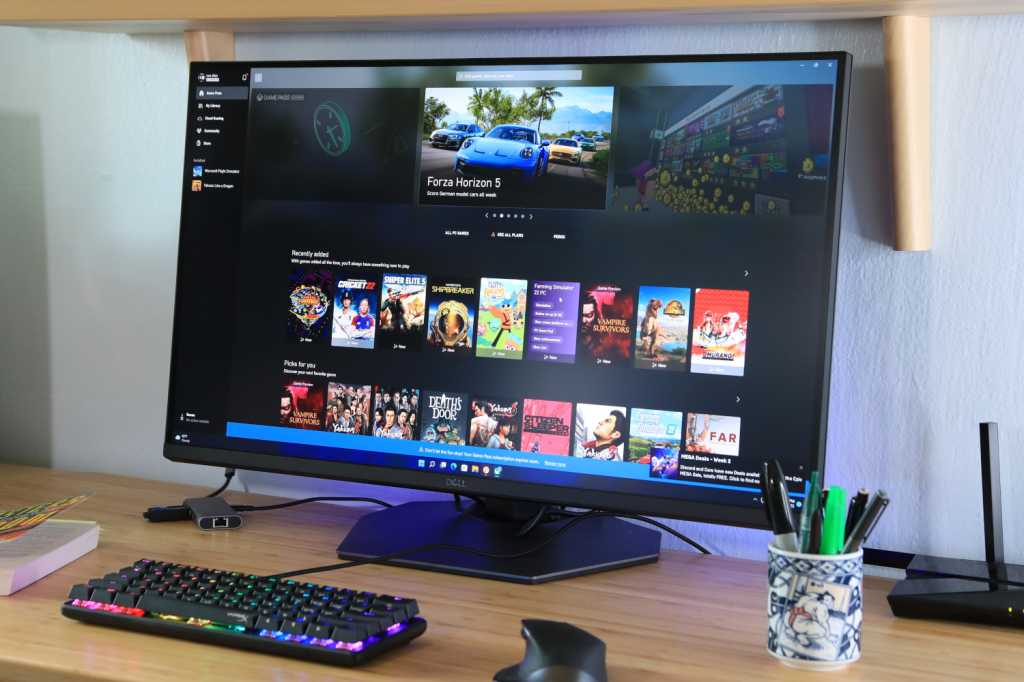Any monitor can be used for PC gaming, but a display built for productivity will likely leave you underwhelmed. Limited contrast, blurry motion, and slow refresh rates still hold basic productivity monitors back in games. Fortunately, there’s no shortage of excellent gaming monitors available at a wide range of price points—and the best of them embrace cutting-edge technology unavailable in any other PC display.
Here are the best gaming monitors of 2023 so far. If you aren’t sold on a gaming monitor, check out our recommendations for the best monitors overall or our roundup of the best 4K monitors for additional options.
Updated 11/18/2023: To include the Gigabyte GS34WQC as our choice for best budget gaming ultrawide. Read our summary below to learn more about this affordable new pick.
Alienware AW3423DW – Best gaming monitor overall
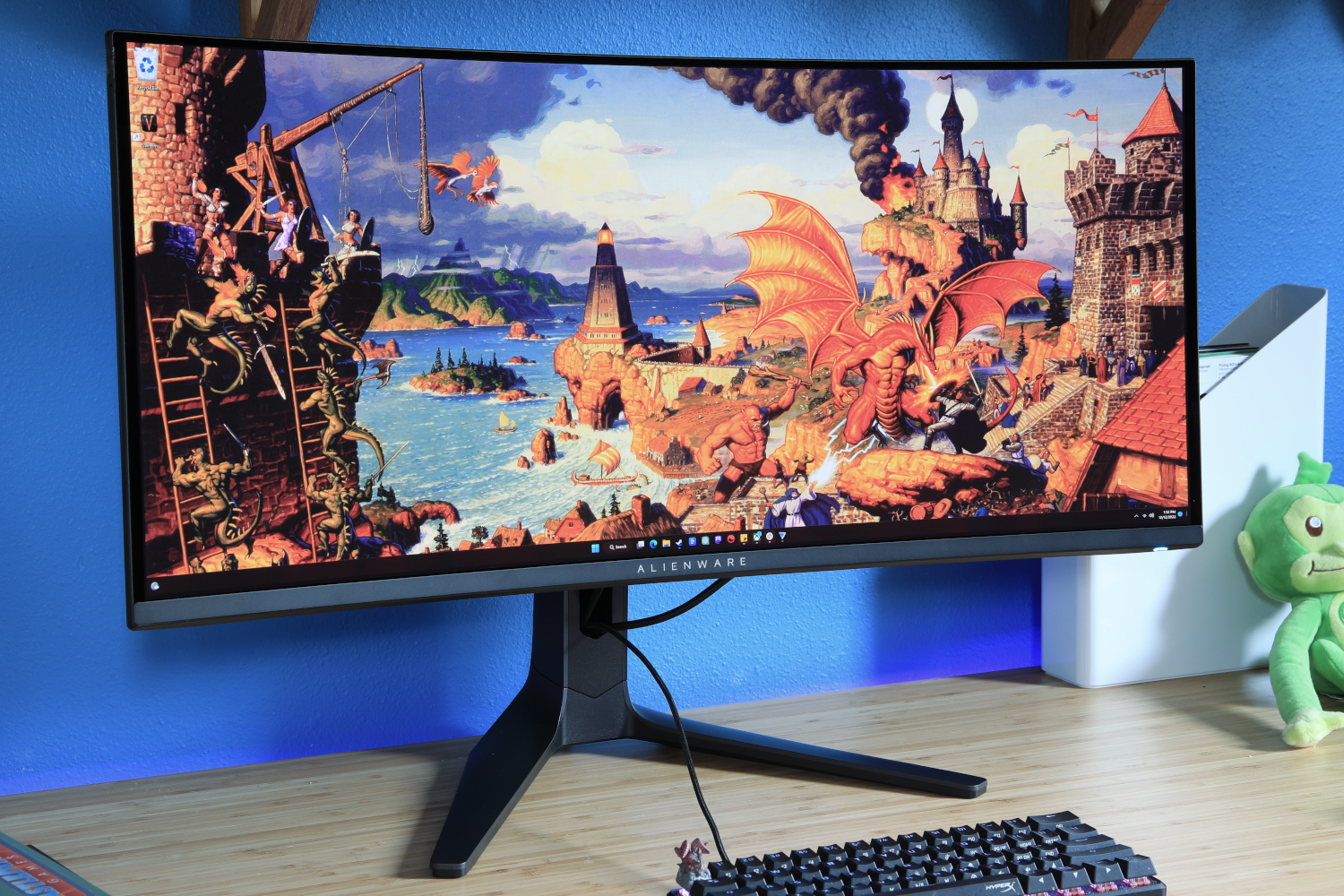
Pros
- Excellent contrast ratio
- Top-notch color gamut and accuracy
- Great motion clarity
- Respectable HDR performance
- Extremely competitive price
Cons
- Stand is a bit too large
- No USB-C
- Maximum HDR brightness is lackluster
Alienware’s AW3423DWF is an outstanding PC gaming monitor.
This monitor has a QD-OLED panel which is like that used in top-tier OLED televisions. OLED provides a nearly infinite contrast ratio, excellent color performance, and respectable brightness. The result is a punchy, vibrant image with an unparalleled sense of dimensionality. The monitor’s ultrawide aspect ratio only heightens the sense of immersion.
Motion clarity is superb. The monitor has a refresh up to 165Hz and supports both AMD FreeSync Premium Pro and VESA Adaptive Sync. The OLED panel technology it uses has lower pixel response times than competitors, too, so there’s minimal added blur and ghosting in motion. Motion is as crisp as you’ll find below 240Hz.
The Alienware AW3423DWF is an alternative to the AW3423DW, a slightly older and nearly identical monitor. The AW3423DW has a higher fresh rate of 175Hz and supports Nvidia G-Sync Ultimate. It’s also $100 to $200 more expensive. Though we recommend the AW3423DWF for most people, the AW3423DW is better for owners of high-end Nvidia graphics cards.
The AW3423DWF is expensive at $1,099.99, but its performance justifies the price. Competing 34-inch and 38-inch ultrawides without QD-OLED technology are often just as expensive but have less impressive image quality.
Dell G2724D – Best budget gaming monitor

Pros
- Handsome design with functional stand
- Attractive SDR image quality
- Good motion clarity at 165Hz
- Supports all Adaptive Sync standards
Cons
- No USB connectivity or 3.5mm audio-out
- Lackluster HDR
The Dell G2724D is an excellent choice if you’re looking for a budget gaming monitor that doesn’t compromise on quality. With attractive design, strong motion clarity at 165Hz, and wide Adaptive Sync support, it provides an immersive gaming experience at an affordable price.
It has a 27-inch IPS LCD panel with 1440p resolution and a 165Hz refresh rate. The color gamut spans 100 percent of sRGB, 86 percent of DCI-P3, and 82 percent of Adobe RGB, delivering a bright and vibrant image that’s excellent in games and adequate for most content creation. The monitor’s Adaptive Sync support is a standout feature, with official support for VESA Adaptive Sync, AMD FreeSync Premium, and Nvidia G-Sync.
It also delivers a handsome design with a matte black and gray chassis and sporty rear vents that provide an aggressive yet unobtrusive look. The functional monitor stand offers a range of ergonomic adjustments and has a compact base that doesn’t consume excessive desk space.
There are a few downsides: The monitor doesn’t offer USB connectivity or 3.5mm audio-out. HDR performance is lackluster, too, making it a so-so choice for HDR gaming.
Yet it’s hard to beat the G2724D’s performance at $300 or below and, more importantly, it offers everything an average PC gamer is going to need for a smooth, responsive, and attractive gaming experience. It’s the kind of monitor that, despite its budget price, could have a place on your desk for several years.
Asus TUF Gaming VG289Q – Best budget 4K gaming monitor
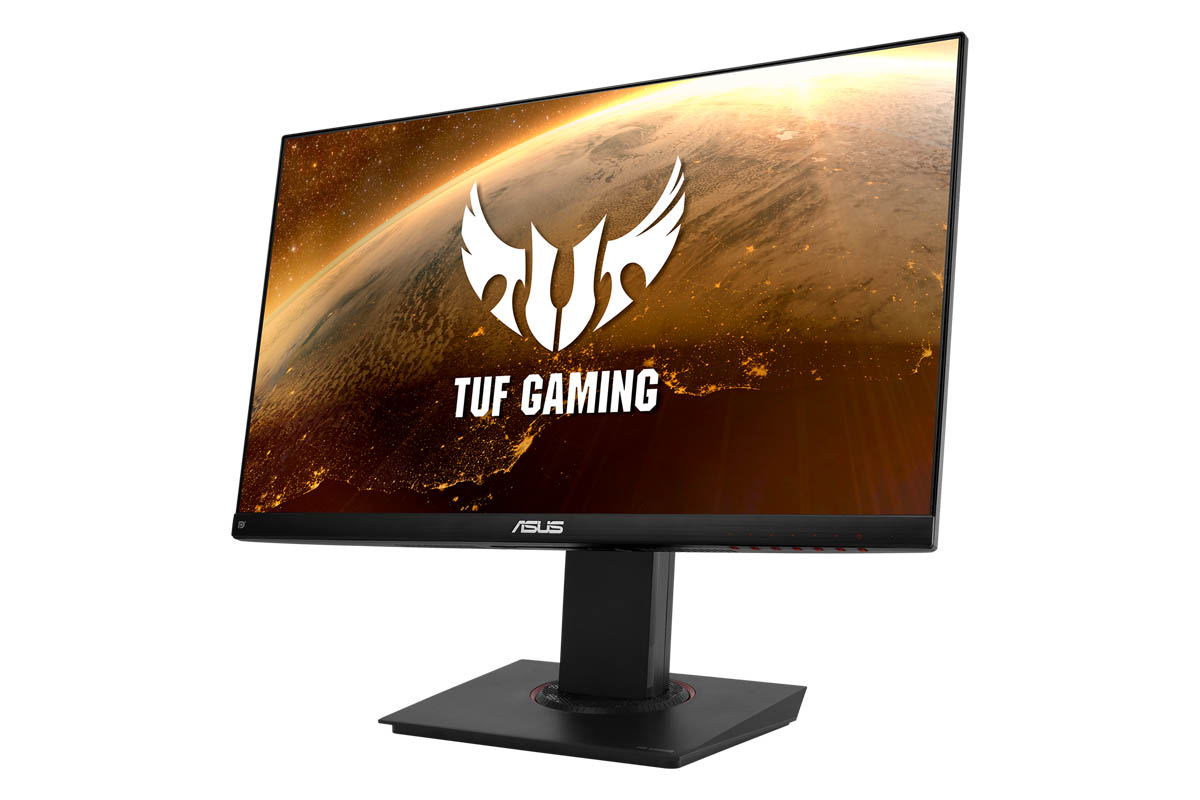
Pros
- 4K resolution
- Good gaming performance
- Tons of ergonomic adjustment options
- Inexpensive
Cons
- A relatively low 60Hz refresh rate
If you are a gamer who enjoys slower-paced games that feature beautiful graphic detail then you may want to consider a 4K gaming monitor. The Asus TUF Gaming VG289Q is a 28-inch 4K display with a refresh rate of 60Hz and adaptive sync, making it compatible with both FreeSync and G-Sync. It’s also only $400—a relative steal for a 4K display. It may not have the refresh rate that is required for quick e-sports or shooter games, but it makes up for that with an absolutely superb 4K display. It also has outstanding image quality and a vivid color range that will make most of the other monitors on this list weep.
Asus branded the VG289Q as a gaming monitor and it will deliver on that in most aspects. But ultimately, it is all about getting a 4K display on a budget and in that respect this monitor is second to none in image quality value for your money.
Innocn 27M2V – Best budget HDR gaming monitor
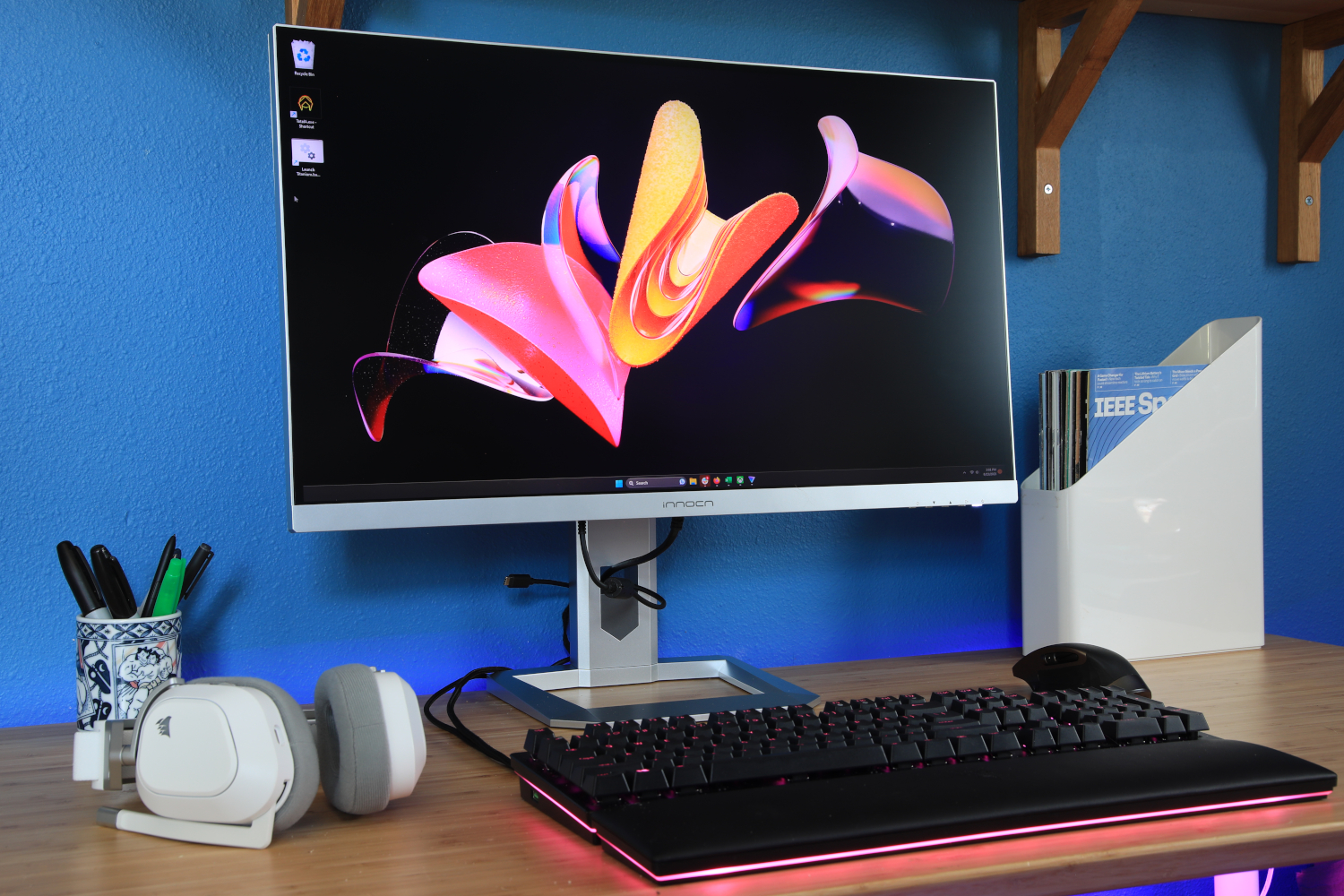
Pros
- Excellent color gamut and accuracy
- Sharp, vivid picture
- Strong HDR performance
- Good connectivity
Cons
- Design looks nice, but feels inexpensive
- Thin user manual
- Confusing on-screen menu
Innocn’s 27M2V is an awesome choice if you want punchy, brilliant HDR gaming for less than $1,000. It delivers excellent HDR brightness, 4K clarity, and smooth motion at a reasonable price.
The 27M2V is a 4K Mini-LED monitor with a maximum refresh rate of 160Hz. It falls behind the smoothest monitors available, like the 500Hz Alienware AW2524H, but still looks excellent in motion. Only the most demanding competitive gamers will need a higher refresh rate. The monitor also supports AMD FreeSync Premium Pro.
HDR is attractive thanks to the monitor’s maximum measured HDR brightness of 877 nits. This is a bit low compared to the best Mini-LED monitors, which can exceed 1,000 nits, but still enough to deliver an obvious boost in HDR games. Bright objects retain good detail, colors look wonderfully saturated, and the dynamic Mini-LED backlight delivers strong contrast.
The 27M2V’s connectivity doesn’t disappoint. It features a USB-C port with a generous 90 watts of Power Delivery, complemented by a DisplayPort and dual HDMI 2.0 ports, tallying up to four video inputs.
It’s not without its quirks. The monitor’s build, while aesthetically pleasing, feels a bit lackluster when handled. Navigating the on-screen menus is a challenge and made more difficult by the absence of a comprehensive user manual. And while Innocn’s customer service exists, it’s limited to email correspondence.
Yet these minor setbacks are forgiven by competitive pricing. With an MSRP of $799.99, and frequent discounts dropping it to a mere $679.99, the Innocn 27M2V offers unparalleled value for the price.
Gigabyte GS34WQC- Best budget ultrawide gaming monitor
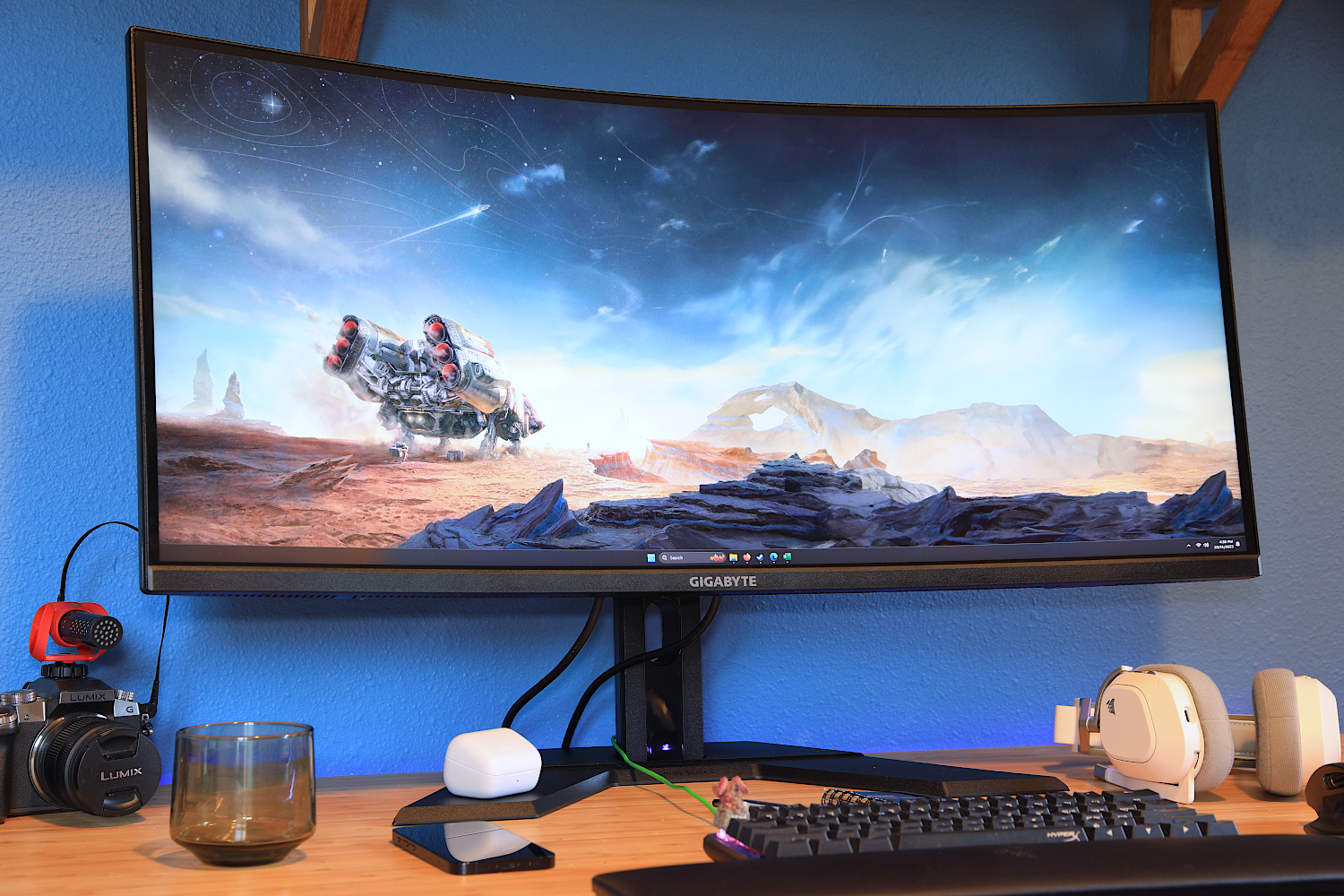
Pros
- Plenty of connectivity and menu options
- Good contrast ratio
- Solid color performance
- Up to 144Hz refresh rate with good motion clarity
Cons
- Stand setup uses screws instead of clip mechanism
- Modest maximum brightness
- HDR is supported but lackluster
The Gigabyte GS34WQC stands out as an impressive ultrawide gaming monitor available at a low price. It has a sharp 34-inch display with a resolution of 3440×1440. That’s paired with good motion clarity driven by a 120Hz refresh rate (overclockable to 135Hz) and support for AMD FreeSync, ensuring smooth and consistent gameplay. Camera movements are detailed, and fast-paced action is easily tracked.
Beyond its motion clarity, the GS34WQC delivers great image quality that’s comparable to monitors twice its price. It has a Vertical Alignment (VA) panel instead of the more common In-Plane Switching (IPS). This provides improved contrast with deeper black levels and more convincing shadow detail in dark scenes. These qualities make it especially suitable for games with a dark, gritty presentation.
The monitor boasts a dull but functional design. It has an ergonomic stand that provides height and tilt adjustment, but its assembly requires manual attachment of four screws, unlike competitors with tool-free clip-in stands. The GS34WQC compensates with an intuitive menu system that has extensive customization options, allowing gamers to tailor the visuals to their preferences.
Value, however, is where the GS34WQC really beats the competition. It’s not the least expensive budget ultrawide monitor, but it delivers better image quality and motion clarity than many competitors while keeping the price in check. Indeed, the GS34WQC is so good it makes $400-to-$500-dollar ultrawide gaming monitors more difficult to recommend. The GS34WQC looks just as good at a lower price.
Acer Predator CG48 – Best big-screen gaming monitor

Pros
- Excellent SDR, strong HDR image
- Great motion clarity
- Superior contrast and wide color gamut
- Multiple PC-friendly connections including USB-C hub
- Useful bundled remote
Cons
- Only one HDMI 2.1 input
- Sharpness is just ok
- Stand offers no adjustment, no VESA mount
Thinking about a TV for your next gaming display? Stop! The Acer Predator CG48 is as large as many OLED televisions and better suited to use with a PC.
The Predator CG48 is a 48-inch OLED monitor with 4K resolution and a maximum refresh rate of 138Hz. It has the same OLED panel as LG’s OLED televisions and delivers great image quality. The monitor’s combination of excellent contrast, spot-on color accuracy, and a wide color gamut provides a realistic and lifelike picture.
Motion clarity is great, too. The 138Hz refresh rate provides excellent motion fluidity in fast-paced games. OLED also provides low pixel-response times, which minimizes blur across a wide range of refresh rates.
Unlike a television, the Acer Predator CG48 has a wide variety of options for connecting a PC. This includes DisplayPort, HDMI 2.1, and even USB-C with DisplayPort Alternate Mode and 65 watts of Power Delivery. You can easily connect several gaming PCs to this display, if needed. The bundled remote can access a wide range of image quality options and adjustments that help you customize the image to your preferences.
This monitor retails at $1,499.99, which is expensive, but it’s often on sale for at least a couple hundred dollars less. Be sure to shop around before buying.
Corsair Xeneon Flex 45WQHD240 – Best big-screen ultrawide
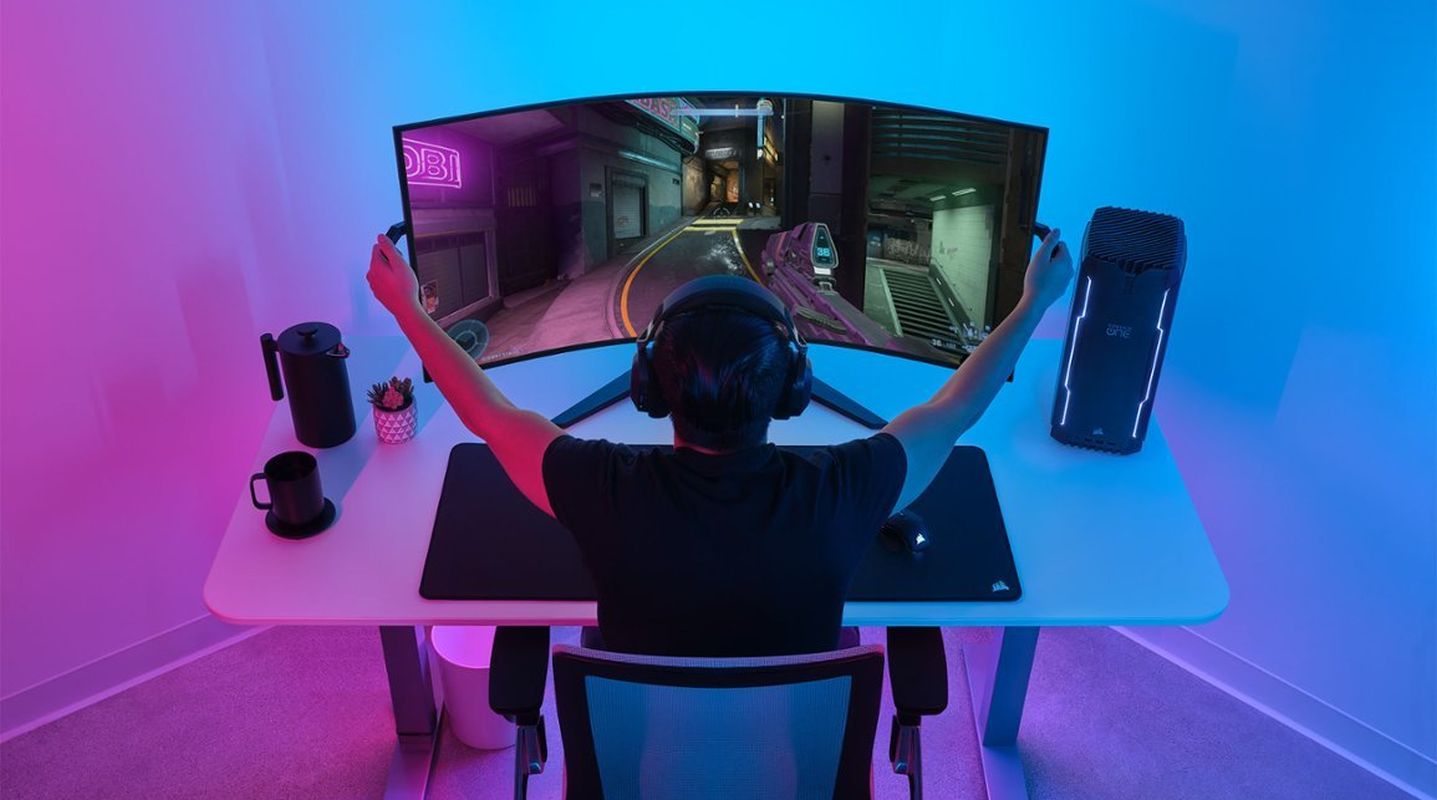
Pros
- Incredibly immersive gaming experience
- Huge 45-inch ultrawide OLED panel can be adjusted from flat to 800R curve to suit your setup
- Exceptional image quality, contrast, color performance, and HDR
- Elite motion clarity on a 240Hz panel
- Abundant connectivity with USB-C hub and power delivery options
- It made four people who walked into my office stop and say “WHOA” like Keanu Reeves
Cons
- Poor text clarity and general sharpness for productivity work
- Very expensive
- No swivel or tilt options, stand can’t be replaced
- Bending mechanism feels clunky and mildly terrifying at first
- Enabling HDR mutes desktop contrast and vibrancy
Want a monitor that takes immersion to a new level and outshines your friend’s measly 34-inch ultrawide? The Corsair Xeneon Flex 45WQHD240 is for you.
The Xeneon Flex is a superb way to enjoy visually stunning games. It has an extremely high contrast ratio and a wide color gamut. Maximum brightness is high (for OLED) as well, which is a benefit if you want to play games with HDR turned on. The monitor’s 240Hz refresh rate and low pixel response times provide top-notch motion clarity. Even its modest 3440×1440 resolution may be seen as a benefit. While it does soften the image, it also reduces the strain on your GPU, making it possible to enjoy high-quality settings on midrange hardware.
Of course, the Xeneon Flex’s most unique feature is in its name: a unique flexible OLED panel that can be adjusted from a completely flat position to an impressive 800R curvature, one of the tightest curves available in a monitor. The curve is adjusted manually with handles located on each side of the display. It’s a useful extra if you enjoy a wide variety of genres (you may want it flat while playing Civilization IV but curved in Cyberpunk 2077).
Measuring a whopping 45 inches diagonally, the Xeneon Flex is significantly larger than a standard 34-inch ultrawide, providing an incredibly immersive gaming experience and ample space for multitasking applications. It stands taller than a 49-inch super-ultrawide like the Samsung Odyssey Neo G9, although it’s not as wide.
Build quality is good, too, as the Corsair Xeneon Flex features a robust and stable stand with integrated ports including USB-C. However, the stand doesn’t offer height adjustment. With a retail price of nearly $2,000, the Xeneon Flex is an investment, but its versatile OLED panel and superior image quality make it an obvious choice for gamers.
Asus ROG Swift PG32UQX – Best HDR gaming monitor

Pros
- Excellent gaming performance
- 4K resolution
- Dimmable mini-LED backlight
- Ergonomic adjustment options
Cons
- High power consumption
- Extremely expensive
The best HDR games, like Forza Horizon 5 or Microsoft Flight Simulator, are transformed by a great HDR display. Unfortunately, most PC monitors fall short—except for Asus’ ROG Swift PG32UQX.
This monitor has a mini-LED backlight with 1,152 LED light zones that can turn on or off independently, boosting contrast and brightness. The monitor achieves extreme brightness in both small areas of the display or across the entire display and does so without noticeable fluctuations in brightness, a problem sometimes visible on the otherwise excellent Alienware AW3423DW.
It’s got top-tier color performance, 4K resolution, and a refresh rate of up to 144Hz. It doesn’t support HDMI 2.1 but can handle 120Hz when connected to a Xbox Series X|S console thanks to a chroma subsampling mode.
The ROG Swift PG32UQX’s superb HDR performance comes at a high price. You can expect to pay around $3,000 for this monitor. Viewsonic’s XG321UG is a similar and slightly less expensive alternative, but it lacks 120Hz support for Xbox Series X|S consoles.
LG UltraGear 27GR83Q-B – Best 240Hz gaming monitor

Pros
- Attractive design
- Bright, colorful image
- Excellent motion clarity
- Officially supports both AMD FreeSync and Nvidia G-Sync
Cons
- Stand is still too large
- Modest contrast ratio
- HDR is available, but disappointing
The LG UltraGear 27GR83Q-B is a 240Hz gaming monitor that offers buttery-smooth motion and great image quality at a reasonable price point.
Its best trait is its stellar motion handling. A refresh rate of 240Hz helps the monitor deliver fast response times and smooth motion in competitive multiplayer games. Better still, the monitor supports both AMD FreeSync Premium and Nvidia G-Sync. Most similar monitors only support one or the other.
LG delivers great image quality with a bright, colorful picture and a respectable contrast ratio of 1250:1. Although it can’t match the infinite contrast of more expensive OLED alternatives, the 27GR83Q-B provides a better sense of depth and immersion than most gaming monitors below $500.
It has a couple flaws. The 27GR83Q-B’s HDR performance is lackluster, as it can’t achieve a brightness high enough to maximize HDR content. The same is true of the monitor’s competitors, however. LG also opts for an annoyingly large stand, so the monitor might feel oversized on a small desk.
LG asks an MSRP of $499.99, but the monitor’s price has dipped as low as $399.99 on sale. It’s a good value at MSRP and a fantastic deal when discounted. The 27GR83Q-B’s image quality is at the top of its class, and LG’s decision to officially support both AMD FreeSync and Nvidia G-Sync makes the 27GR83Q-B wonderfully versatile.
Alienware AW2524H – Best 500Hz gaming monitor
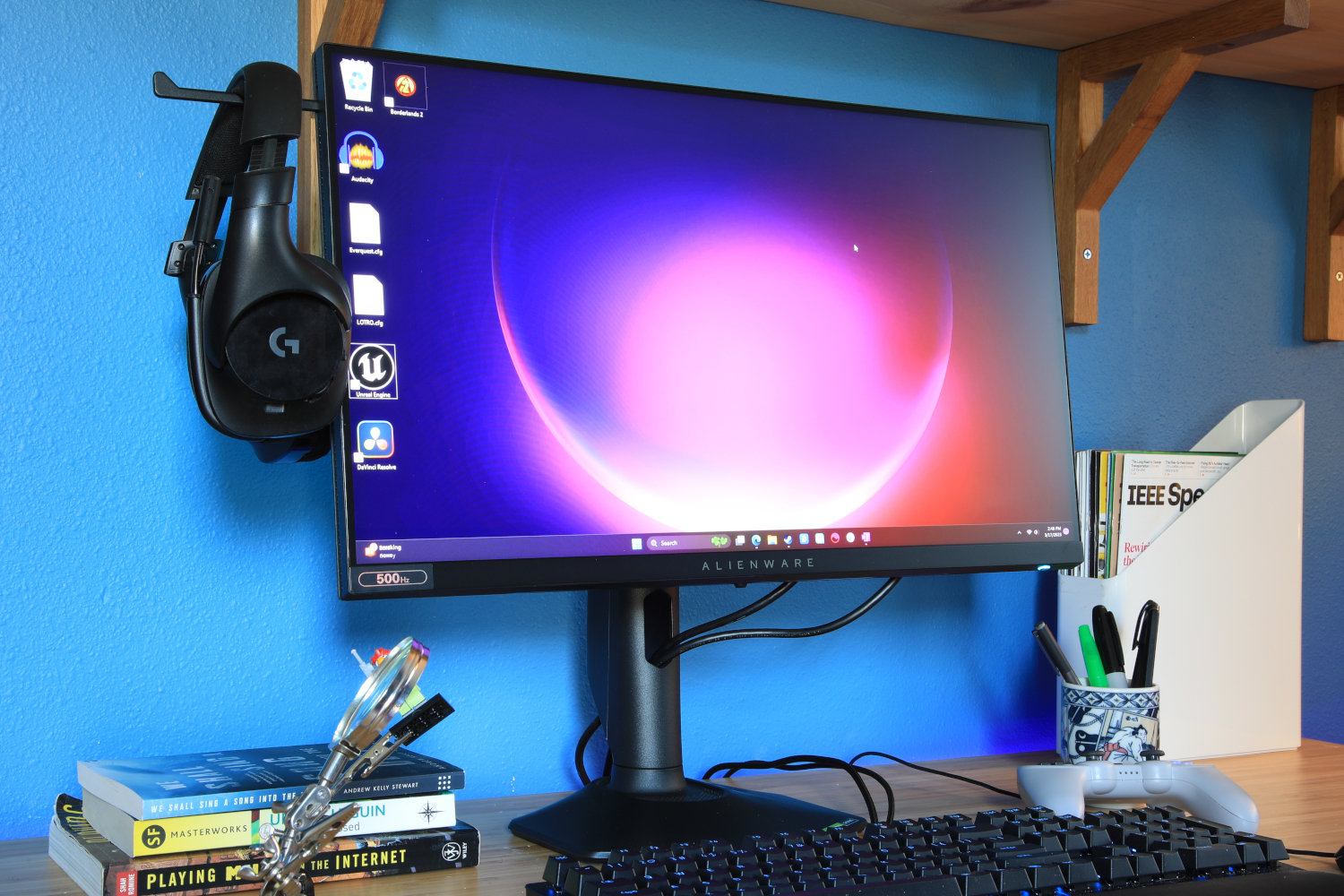
Pros
- The best motion clarity available today
- Bright, vivid image quality
- Compact ergonomic stand
Cons
- Limited video input selection
- Mediocre image quality
- High pricing for a 24-inch monitor
Want unparalleled motion clarity? Look no further than Alienware’s AW2524H, the world’s first 500Hz gaming monitor.
This monitor delivers fantastic detail in fast-moving objects and remains legible during rapid in-game map navigation. Competitive gamers will appreciate its ultra-low input latency, complemented by Nvidia Reflex Analyzer, which accurately measures PC response to input. The monitor’s refresh rate is so high, in fact, that you’ll need to double-check the maximum frame rate of your favorite games. Some have a hard frame rate cap below 500 frames per second.
The AW2524H’s design is outstanding. It relies on Alienware’s sleek, futuristic aesthetic and outstanding build quality. The compact stand enables ergonomic adjustments while minimizing desk space consumption, and a headphone stand is included on the display’s left flank.
The monitor’s image quality doesn’t rival similarly priced monitors but remains respectable and defeats most 24.5-inch 360Hz monitors. This is thanks to the monitor’s vibrant, vivid color. HDR performance is underwhelming, but competitive gamers are unlikely to find this a problem.
Snagging the world’s first 500Hz monitor doesn’t come cheap: note the monitor’s $829.99 price tag. That’s a hefty sum for a 24.5-inch display. But, if you’re on the path to pro, the monitor’s price is a fair exchange for its class-leading motion clarity and responsiveness.
LG Ultragear 27GN950 – Best 144Hz gaming monitor
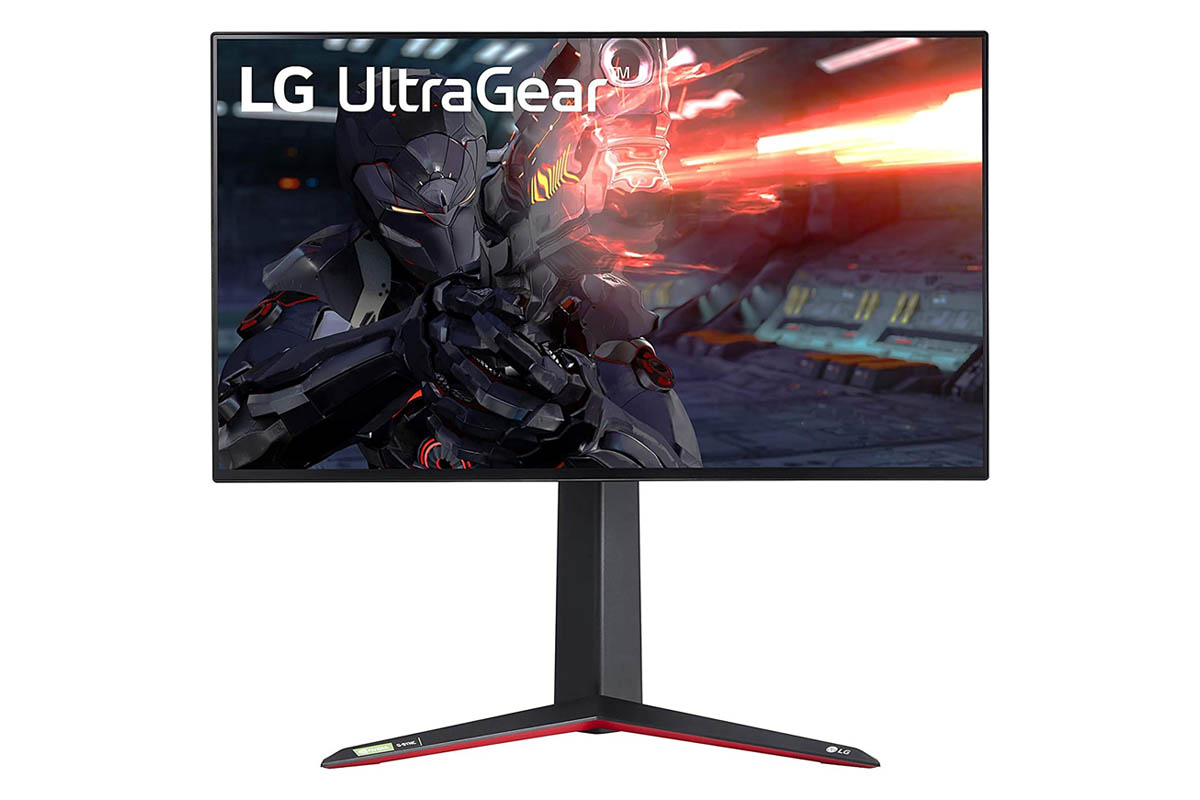
Pros
- Excellent gaming performance
- Incredible image quality
- Ergonomic adjustment options
- Special gaming configurations
Cons
- High power consumption
If you’re not a professional gamer or you just don’t require the obscenely fast 240Hz, then you can find a whole host of great options at 144Hz instead. Our pick for the best of the bunch is the LG Ultragear 27GN950.
Not only is it still super fast, but it also has 4K resolution, all of the ports your heart desires, and impressively high color fidelity. It is a great option for those who will use it for multimedia other than just gaming and don’t mind sacrificing a little speed to gain a lot of pixel density.
Admittedly, it’s a bit pricey for a 27-inch monitor and you will need a high-end GPU to take advantage of its full potential, but if you can afford it, then this just might end up being the pièce de résistance in your display setup.
Dell G3223Q – Best HDMI 2.1 gaming monitor
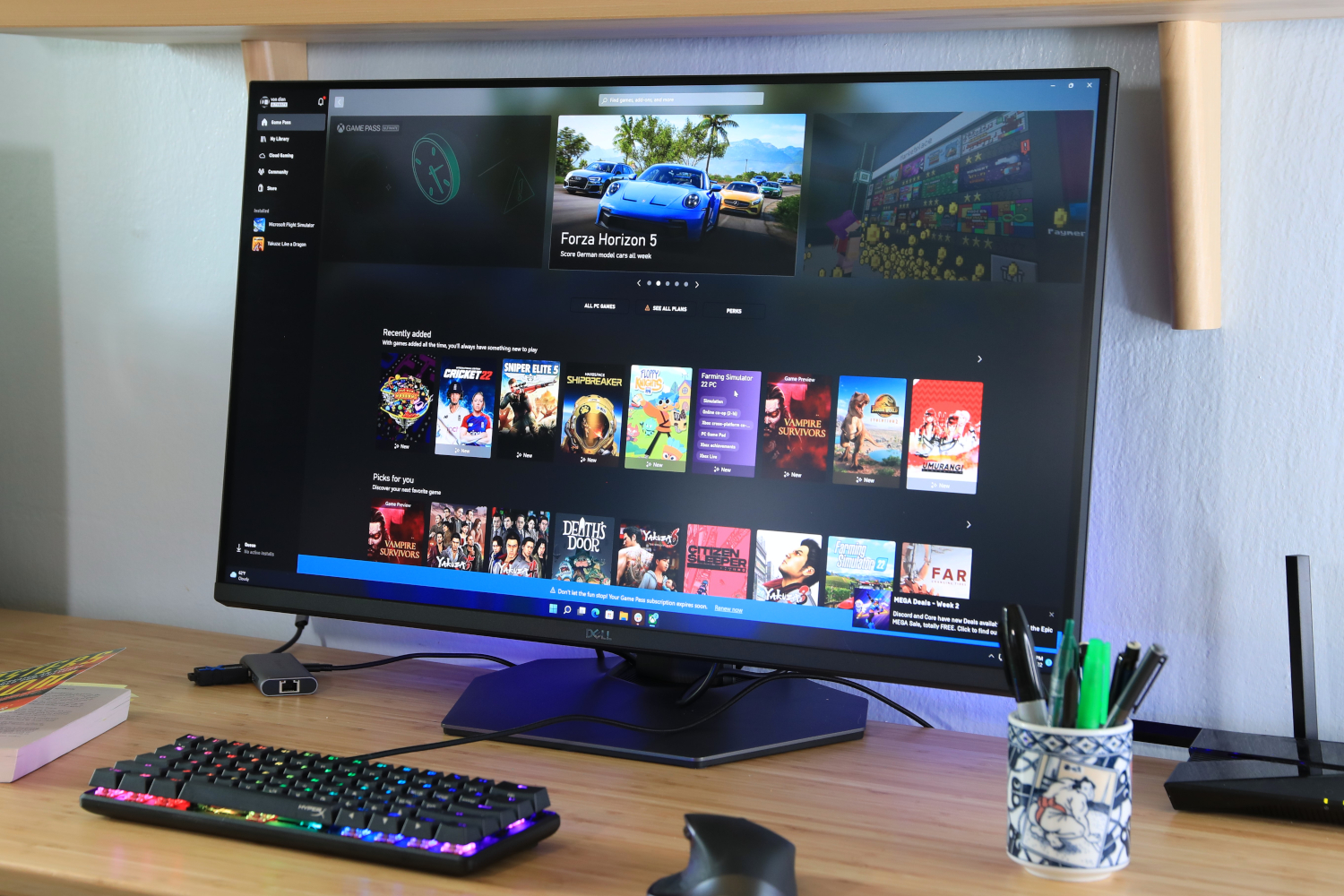
Pros
- Bright, sharp SDR image
- Good color gamut and accuracy
- Solid build quality and ergonomic stand
- Great motion clarity at 120Hz or 144Hz
Cons
- Disappointing HDR performance
- Odd menu choices for creators
- Modest USB connectivity
The Dell G3223Q is a large, attractive 32-inch gaming monitor that’s ideal for PC gamers who also want to connect a PlayStation 5 or Xbox Series X|S.
It supports 4K resolution at a refresh rate of up to 144Hz and has two HDMI 2.1 connections. You can connect a PlayStation 5 and Xbox Series X|S console simultaneously. DisplayPort is also available for your PC. The monitor supports AMD FreeSync Premium Pro and Nvidia G-Sync.
Image quality is strong with excellent brightness, good contrast, and great color performance. These traits, combined with the sharpness of 4K, makes for an excellent SDR experience. HDR isn’t impressive, which could be a concern for console gamers. Most monitors in this price range aren’t great at HDR, however, so we think this issue can be overlooked (for now).
The Dell G3223Q is a good value, too. Typically priced around $825, the G3223Q is among the more affordable HDMI 2.1 monitors with a 32-inch, 4K display panel. We also appreciate the monitor’s design, which feels more durable and looks more attractive than similarly priced alternatives.
Asus ROG Strix XG17AHPE – Best gaming monitor for mobile use
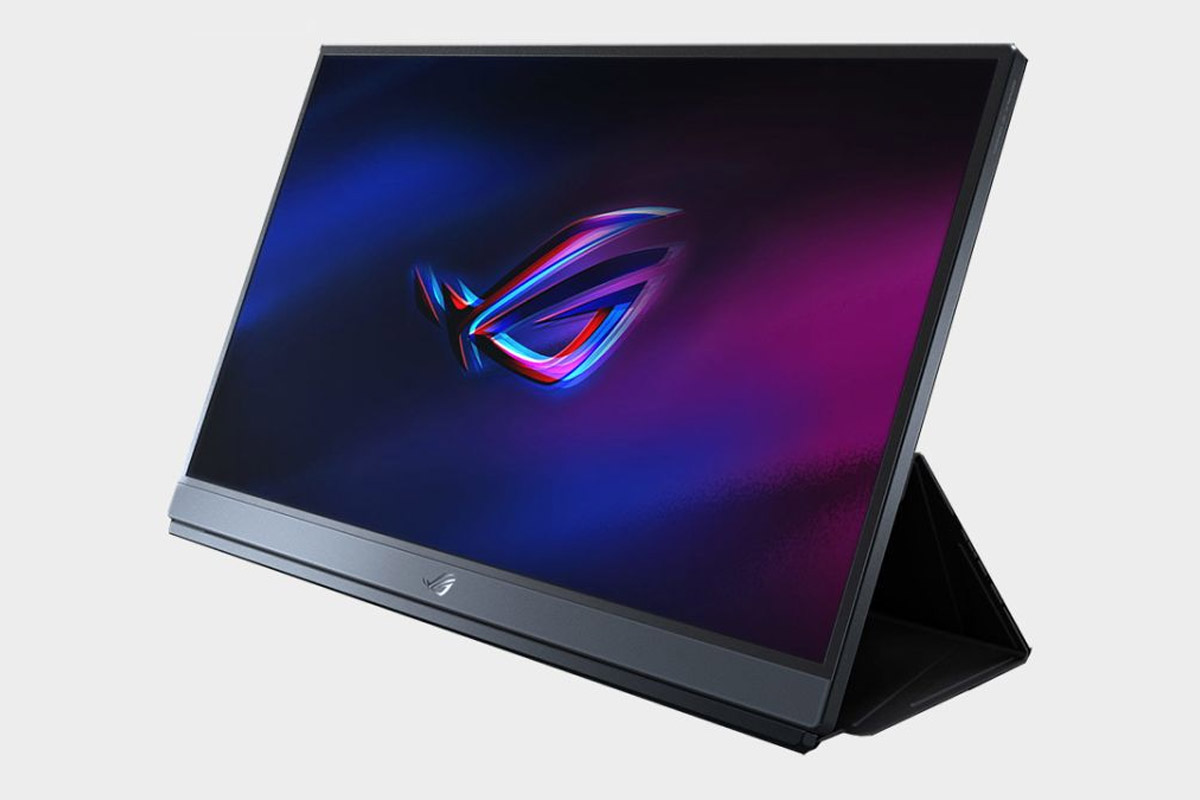
Pros
- Gaming monitor for mobile use
- 240Hz refresh rate
- Independent operation
- Complete equipment included
Cons
- High power consumption
- Expensive
The Asus ROG Strix XG17AHPE is a bit unique in that it was designed and built to be a top-quality gaming monitor that is easily portable and mobile friendly.
It is a 17.3-inch display with 1080p resolution and a screaming fast refresh rate of 240Hz. It also has adaptive sync technology and built-in speakers. You can easily connect it to your laptop or next-gen console of choice for on-the-go gaming.
The battery should last you about 3.5 hours without needing to be charged and it comes with a cover that can be folded back to make a stand for the monitor itself. However, if you can afford to buy the extra tripod stand it is recommended as this provides a more stable base as well as height adjustment options.
The specs alone make this an excellent gaming monitor in its own rights, but the ability to pack it up and take it with you makes this a great option for those who like to game on the go. You will pay for this convenience though as even the base option is quite steep, let alone the bundle which includes the tripod stand.
Asus ProArt PA348CGV – Best dual-purpose gaming monitor
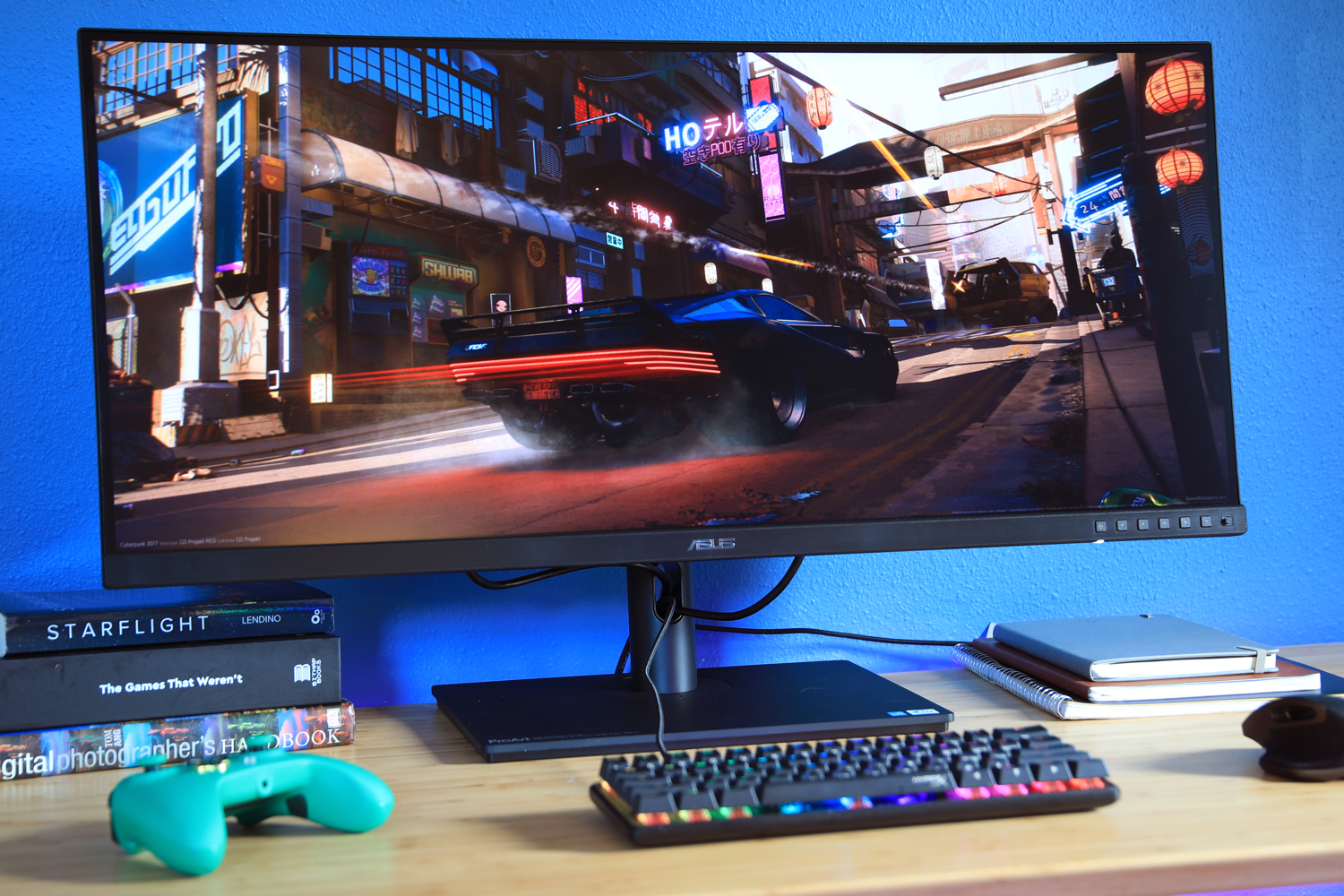
Pros
- Excellent SDR image quality
- Sturdy, hefty design
- Wide range of customization
- 120Hz refresh rate
Cons
- USB-C hub lacks video-out or ethernet
- HDR is merely passable
Asus’ ProArt PA348CGV is an excellent ultrawide for professionals, digital artists, creatives, and anyone else wanting to work and play on the same display.
The PA348CGV delivers top-notch color accuracy, a wide color gamut, and numerous image-quality adjustments, making it ideal for demanding users who need to precisely calibrate a display. Pro users can switch to a preset mode, such as the DCI-P3 mode, or use a custom display mode to calibrate the image in detail.
Most monitors of this caliber leave gamers in the cold, but the PA348CGV invites them in with a 120Hz refresh rate and support for AMD FreeSync Premium Pro. It offers smooth frame pacing and great motion clarity, especially at high frame rates. It looks great straight out of the box and is particularly pleasing in bright, vivid games like World of Warcraft or Forza Horizon 5.
Sold at an MSRP of $729, the PA348CGV is priced to compete with other premium ultrawides, yet its image quality leaves alternatives in the dust. You’ll be hard pressed to find a better value in this category.
What to look for in a gaming monitor
Gamers have unique needs that exceed an average user. Here’s what PC gamers should look for in a gaming monitor.
Resolution
Most widescreen gaming monitors have a resolution of 1920×1080 (1080p), 2560×1440 (1440p), or 4K (3840×2160). A higher resolution improves sharpness and clarity, which helps games look more detailed and lifelike. Increasing resolution also increases demand on your video card, however. Gamers with less powerful hardware may want to avoid 4K.
Refresh rate
A higher refresh leads to smoother motion by increasing the number of frames that can appear each second. It also reduces input lag, as each frame appears more quickly. A 144Hz refresh rate is a big improvement over the standard 60Hz, and 240Hz is better still. The improvement becomes more difficult to notice after 240Hz, but 360Hz monitors exist for those who want the lowest input lag possible.
DIsplayPort and HDMI 2.1
DisplayPort is the best connection for PC gaming. Even DisplayPort 1.4, which is rather old, can support 4K at 144Hz. HDMI 2.1 can handle 4K at 120Hz and is an acceptable connection for PC gaming, though most gamers will use it for a PlayStation 5 or Xbox Series X|S game console.
How we test gaming monitors
We test all monitors with a DataColor SpyderXElite calibration tool. This tool can report objective measurements for brightness, contrast, color gamut, color accuracy, color temperature, gamma, and other metrics.
Our results are recorded and compared to the results for past monitors. Though we rely on our eyes for initial impressions, comparing objective results lets us evaluate monitors against hundreds of older models from past reviews and testing.
We examine motion clarity by quickly moving the camera across the map in Civilization VI, playing a round of Rocket League, and panning the camera across the landscape in Final Fantasy XIV—among other games. Finally, we use the popular UFO Test for an apples-to-apples comparison between displays.
In addition to gaming prowess, we consider a monitor’s on-screen menu, ergonomic stand (or lack thereof), and overall build quality—all important qualities irrespective of use case.
FAQ
What resolution is best for a gaming monitor?
Many competitive gamers prefer 1080p resolution because it allows for high frame rates and low input lag even on modest hardware. This also makes it ideal for budget shoppers. 1080p is not as crisp as higher resolutions but, if it allows for higher frame rates, can look good in motion.
1440p remains a great mid-range option. It looks much sharper than 1080p but doesn’t drastically increase load on your video card. A variety of 1440p monitors now support a refresh rate up to 240Hz.
4K is the last word in sharpness and clarity. Playing a modern game on a 4K monitor takes the experience to a new level. It’s very demanding on your video card, however, so you’ll need top-tier hardware for a smooth experience.
Ultrawide monitors differ in resolution because they have a wider screen. Most ultrawide monitors have a resolution of 3440×1440, which delivers sharpness similar to a 1440p ultrawide. Some larger monitors have more exotic resolutions: the 49-inch Samsung Odyssey G9 Neo, for example, has 5120×1440 resolution.
Should I use AMD FreeSync or Nvidia G-Sync?
AMD FreeSync and Nvidia G-Sync can synchronize the refresh rate of a compatible monitor with the output of an AMD or Nvidia video card. This ensures smooth motion and eliminates screen tearing, a distracting visual artifact.
You might be surprised to learn that most AMD FreeSync and Nvidia G-Sync monitors rely on the VESA Adaptive Sync standard. This is why many gaming monitors now support both. The difference in performance is minimal.
Our G-Sync vs. FreeSync comparison goes in-depth on their similarities and differences.
Should I buy an ultrawide gaming monitor?
Our top choice, the Alienware AW3423DW, is an ultrawide gaming monitor. An ultrawide aspect ratio is more immersive in racing, simulation, and role-playing games. It also offers a large, more impressive perspective in many strategy games.
Not all games support an ultrawide aspect ratio, however. It’s wise to check that your favorite games support ultrawide monitors before making a purchase. Consoles rarely support ultrawide aspect ratios, so console gamers should stick with a widescreen display.
